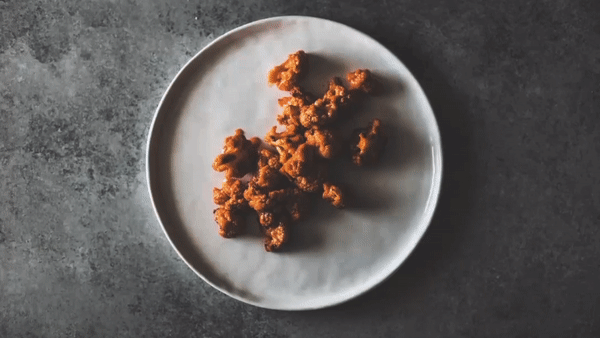Saturday 19 August 2017
How To Cook The Perfect Chocolate Crispy Cakes
Chocolate crispy squares are some of the first cakes most of us learn to make – maybe the fond memories of standing on a stool to laboriously stir the bowl, cereal flying everywhere, mean these simple treats never quite lose their appeal. Or perhaps they just tick all the boxes our most basic selves demand: at once sweet, buttery and delightfully crunchy.
Either way, they’re useful to have up your sleeve (and squashed under your feet) in what are the dog days of the school holidays for much of the country. At this stage in the summer, any activity that makes everyone happy is a rare gift indeed – and remember: you’re never too old to lick the bowl.
The rice
You wouldn’t think there was much debate about this, but Christal Sczebel of the Nutrition in the Kitch blog rejects the usual “puffed refined rice” in favour of the brown version. Although nobody in the UK seems to sell the Canadian organic sprouted rice cereal she uses, I do locate some wholegrain rice puffs. Unfortunately, they have a different texture to the usual kind – chewy, rather than crunchy. Clearly, this is not a treat that is ever going to be high in fibre.
Chocolate
Although I remember making these with cocoa powder back in the frugal 80s, chocolate seems to be a more common choice these days, Martha Stewart and Sczebel do use powder (the latter in the form of raw cacao, naturally). Chocolate gives the cakes a more rounded character, with testers preferring the higher cocoa versions to the very sweet milk variety used by Nigella Lawson (under-10s may disagree). Everyone loves the combination of milk and dark chocolate in the recipe from Annie Bell’s Baking Bible, however – and, to make them really chocolatey, I’m going to stir in some cocoa powder, too.
Nicky Evans wins a prize for the best start to a recipe I have ever come across: “Five Mars bars, chopped,” beats the mythical, “First, catch your hare,” hands down. Her recipe divides the table; we all love its salty, caramel tang, but it is much richer than the traditional variety – “You couldn’t eat more than a tiny square,” says one tester, shovelling in her third. Well worth a go, especially if you’re making these with ingredients foraged from the all-night garage (no judgment here), but not canonical crispy cake territory.
The fat
Butter is the usual choice of lubricant, although Sczebel substitutes vegan margarine and almond butter. This works well texture-wise and gives the cakes a subtle nutty flavour that’s a real hit with testers, but, again, we conclude that it doesn’t fit with our fond memories. It’s also worth bearing in mind that neither of these things sets quite as firm as dairy butter, so the resulting cakes will be more fragile than the usual sticky missiles – the recipe recommends a spell in the freezer, then overnight refrigeration to help them set.
The sweetener
Bell and Evans feel that chocolate is sweet enough on its own (and no wonder, with five Mars bars), but sugar acts as a binder as well as a flavouring here: Lawson’s golden syrup gives her cakes a pleasing, slightly sticky, quality which makes them feel less dry than Bell’s version. Stewart goes for melted marshmallows, that gives her cakes an unnervingly chewy, almost stringy, consistency, and Sczebel opts for raw honey, which we can’t detect in the finished product. Sometimes, you just can’t beat an inverted sugar syrup.
The extras
Stewart and Evans top their cakes with melted dark chocolate (don’t blame Stewart for the bloom on the top of hers; it’s entirely my fault), but this feels far too decadent for such a simple treat – even Bell’s white chocolate chips add too much complexity, while Sczebel’s desiccated coconut confuses the issue no end, nice though it is. This is a gloriously one-dimensional pleasure: no gussying up required.
Perfect chocolate crispy cakes
(Makes about 25)
100g dark chocolate
75g milk chocolate
50g butter
2 tbsp cocoa powder
4 tbsp golden syrup
135g puffed rice
Set a heatproof bowl over a pan of simmering water, making sure it doesn’t touch the water. Break the chocolate into roughly equally sized pieces and add to the bowl along with the butter. Melt, stirring occasionally to help it along.
Meanwhile, put the puffed rice in a large bowl and line a tin about 20cm square with foil.
Once the chocolate has melted, stir in the syrup and cocoa until you have a smooth mixture. Pour into the bowl of puffed rice and mix well, then spoon into the tin. Press down very firmly with the back of a spoon, then refrigerate for 1-2 hours until set. Cut into squares and store in an airtight container well out of easy reach.
Thursday 10 August 2017
How to Have Your Health Food and Love It
At some point in the ’70s my mom bought her first pair of bluejeans. She didn’t suddenly throw away all her tailored wool skirts and silk scarves, or dump all the cashmere sweaters from the dresser drawers into bags destined for the Salvation Army, but there they were, in rotation: A pair of soft bluejeans, modestly flared at the ankle, with two flat front pockets, that she wore, if I may say, with exceptional and enviable style.
And then, around this same time, you opened the fridge one day and found she had glass jars lying on their sides, cheesecloth held with rubber bands over their mouths, alfalfa sprouts growing inside. And there on the kitchen counter, nestled like a flock of broken fledglings fallen too early from the nest, were eight little glass jars wrapped in kitchen towels and set on an electric medical heating pad meant for sore back muscles, incubating her homemade cultured yogurt. Which turned out tangy and creamy and expert.
My mother was dispositionally unwilling to sacrifice pleasure for politics, or style for trends, enough so that I did not mind the dialed-down frequency of her customary brown-butter sauces, ripe, oozing full-fat cheeses and visits to the butchers. And I welcomed the open-faced avocado sandwiches on pumpernickel with cream cheese, red onion and alfalfa sprouts (hers were clean and fresh and lively) and fruit preserves stirred into yogurt for dessert and shopping trips to the memorably dirty health-food store. There the bulk jugs of tamari and tahini and separated almond butter under an inch of rancid oil had crud on their spouts, and the bulk bins of oats and millet and whole-grain flours were lively with meal moths. This was as fascinating to me as the whole sides of bloody animals hanging from hooks in the refrigerated walk-in at the Italian butcher we used.
I thought it was just as miraculous and cool to see her making her own yogurt and granola, and sprouting her own sprouts, as I did watching her make Irish soda bread or duck-leg confit or the annual birthday baked alaska that she set under mesmerizing blue rivulets of fire with kirsch flowing from half an empty eggshell set at the top of the meringue Vesuvius. In a way, her French background, her impeccable kitchen skills and her intractable devotion to pleasure in eating made her a kind of perfect precursor and model for healthful whole-foods cooking, 45 years ago.
Tofu, however, I came to for the first time during my second attempt at college in the early ’80s, at a lefty, rigorously political liberal-arts college in New England, under decidedly less stylish and markedly less pleasure-principled circumstances. It seemed as if there were a dog-eared ‘‘Moosewood Cookbook’’ in every kitchen on campus. They sold it in the campus bookstore next to Wollstonecraft and Hume and John Stuart Mill. The chore wheel — that egalitarian method for distributing household chores to make these experiments in communal living harmonious and less fetid — in our on-campus apartment had a slot wedged right there between Clean Bathrooms and Vacuum Common Area: Water the Tofu! Everybody cut the tofu into cubes and steamed it in a wok with celery and onions and mushrooms and garlic and ginger. We meant to stir-fry it, but you could never get a wok hot enough on those electric coil burners, so tofu dinner was always wet and limp, then drenched in tamari. It was not stylish, expert or enviable.
When I started making soft, silken tofu about five years ago, it was like getting my own first pair of bluejeans. I did not toss out all my marrow bones and suckling pig and the crème Chantilly to remake myself in soy. I started my first batch in a stainless-steel pot on the kitchen counter and finished in glass Ball jars. I took exceptional care of the beans, the soak, the milk. The tofu was rich, almost nutty. It had, and will always have, a faint, chalky mouth-feel, which the unctuousness of salted French butter will completely smooth out in the finished dish. If you went at this in the spirit of the chefs who have labs/test kitchens/ateliers with interesting appliances and chemicals, I think you could add lecithin or other mail-ordered emulsifiers to ‘‘correct’’ that effect in the milk before you coagulate the tofu. But I really want you to go at this the way my mom eventually went for the macramé bikini and the addition of brewer’s yeast on our popcorn: Enjoy yourself, but remain yourself.
Friday 4 August 2017
Yes, You Can Cook Cucumbers, And They Are Delicious
We eat a lot of cucumbers stateside, most often served raw and crunchy to impart a refreshing quality to a meal. Does “cool as a cucumber” ring a bell?
Hardly do we ever cook them ― but we can, and we should.
Cooked cucumbers are more common in Asian cuisines, where they work wonders in stir fries and side dishes. But they shouldn’t be reserved just for that part of the world.
Julia Child has a recipe for cooked cucumbers in Mastering the Art of French Cooking, in which she actually bakes them in the oven. Martha Stewart also has a recipe where she quickly sautés cukes in butter with dill. But it’s time to give them more play in your kitchen.
Cooking cucumbers first came to our attention while listening to the podcast The Splendid Table, when a caller asked host Francis Lam what to do with excess cucumbers. (It does become a problem in the summer.) When he suggested sautéing them, our interest was piqued and we got to cooking.
We came up with a simple recipe that’s quick to make, and actually easy to love. So when you have too many cucumbers on hand, or just want to switch things up, give this easy recipe a try. It just might convert you.
Spicy Sautéed Cucumbers
2 medium-sized cucumbers, sliced, seeded and partially peeled
1/4 teaspoon salt
1 tablespoon soy sauce
1 tablespoon canola oil
1 large garlic clove, sliced
1/4 teaspoon chili flakes
1. Place sliced cucumbers in colander, toss with salt and let sit for 30 minutes to drain out the excess water. Rinse well and pat dry.
2. In a sauté pan, add canola oil and garlic. Cook on medium-low heat for a couple of minutes, until the garlic is fragrant. Add cucumbers, soy sauce and chili flakes and cook for 3-5 more minutes, before the cucumbers become overly cooked (and mushy) and when they still have a little crunch to them. Enjoy!
Subscribe to:
Posts (Atom)












